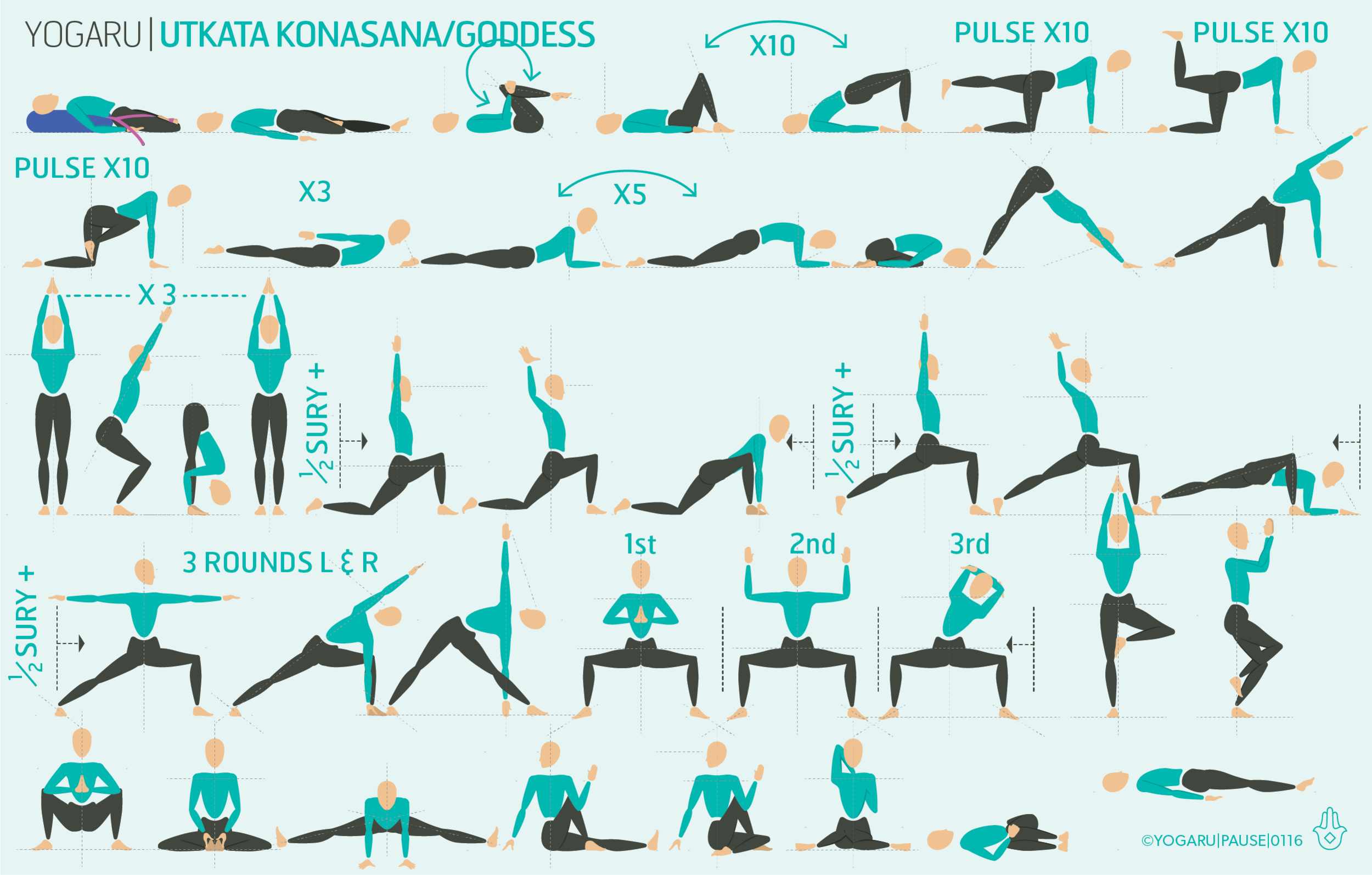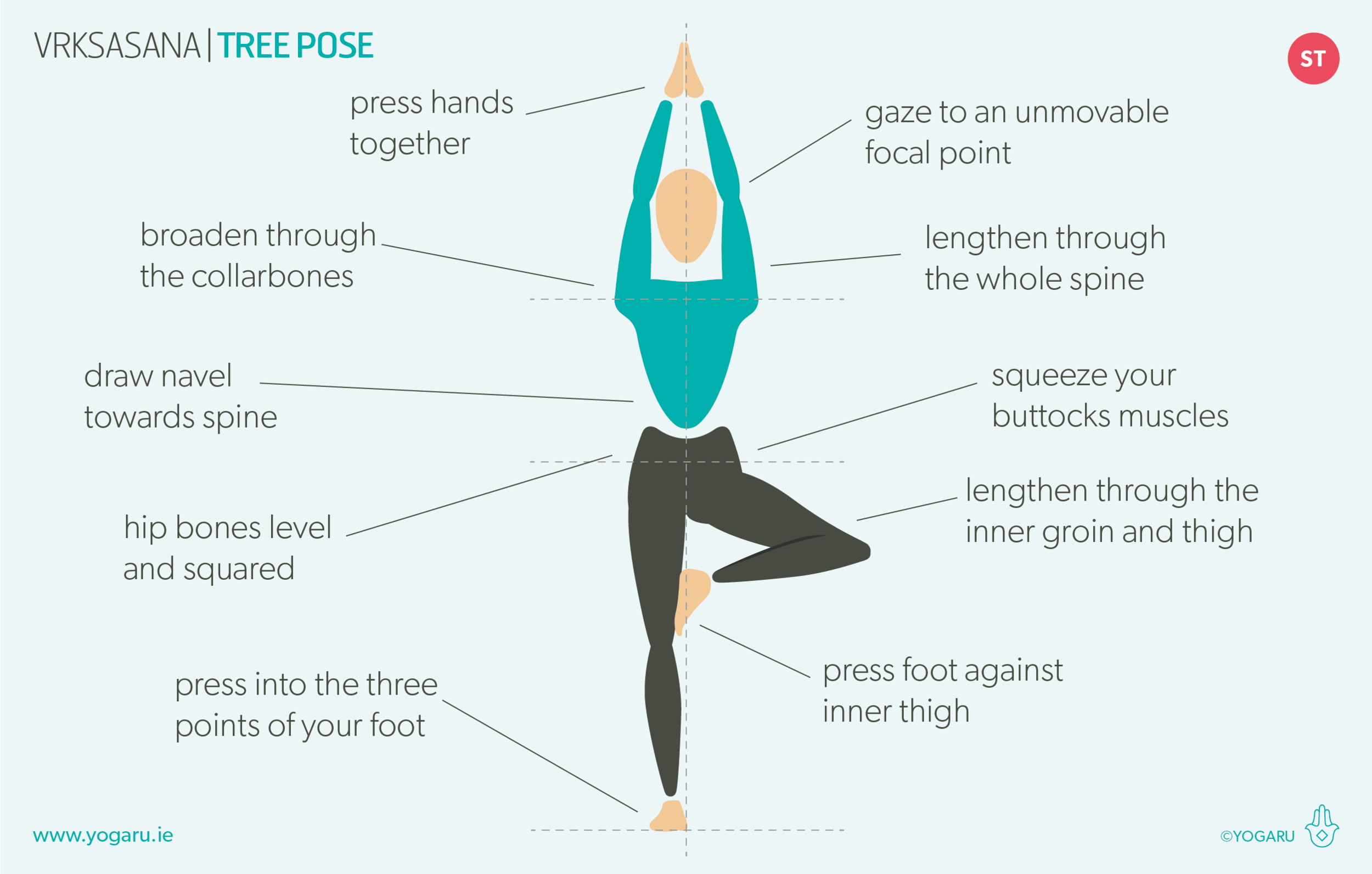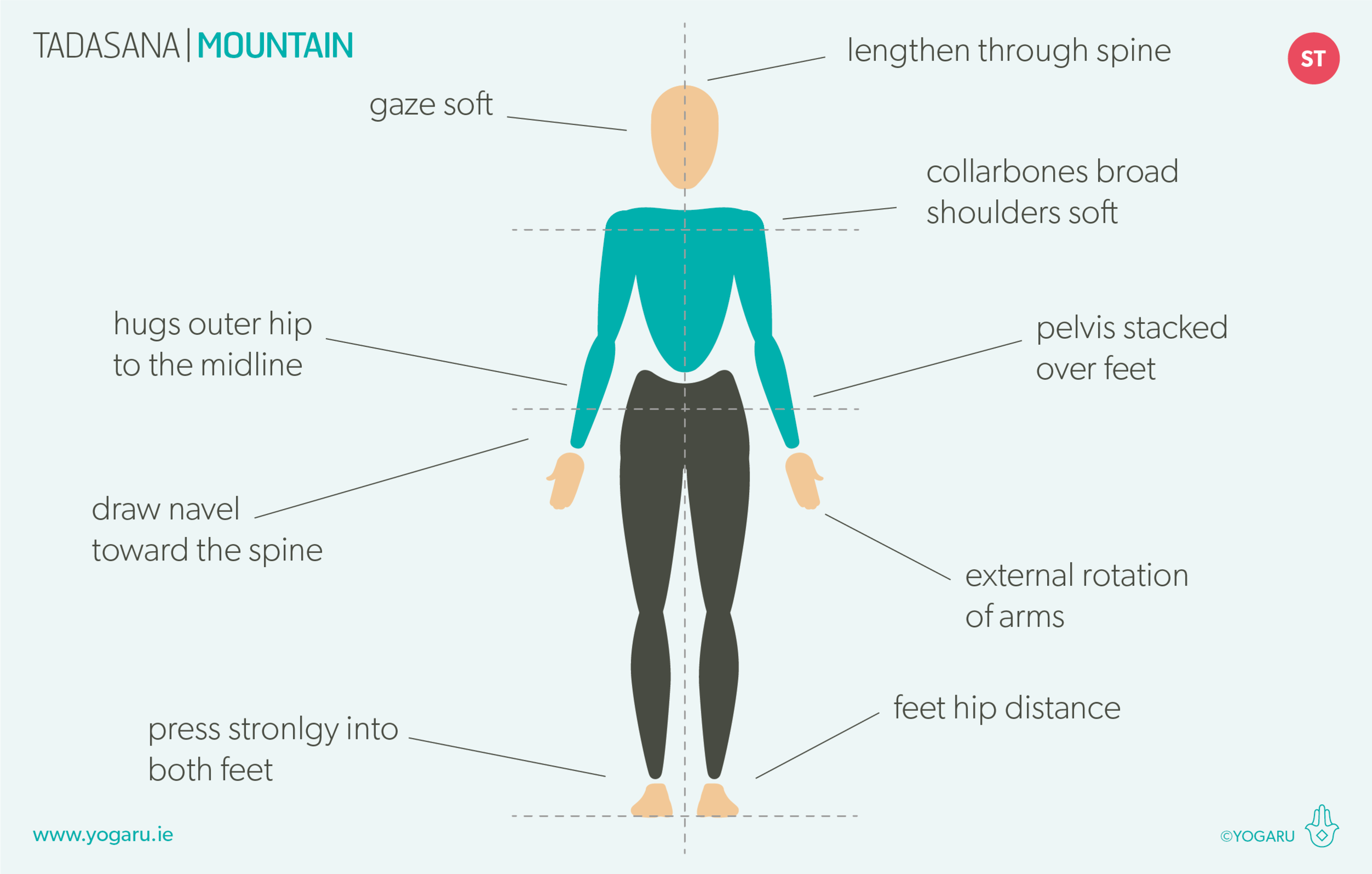FIND YOUR INNER GODDESS
Utkata Konasana/Goddess is one of my favourite poses. Quite a few of the hip opening poses are asymmetrical poses, where left and right sides of the body are doing different things. In Utkata Konasana/Goddess if you drew a line down your midline the right and left side are in mirroring each other in symmetry which allows you to check that both sides are balanced. I often use Utkata Konasana/Goddess as a transition pose to go from a Virabhadrasana II/Warrior II standing flow at the top of the mat with the right leg forward, to a Virabhadrasana II/Warrior II standing flow at the back of the mat with the left leg forward. It is a subtly strong pose with plenty of physical challenge, all your muscles that have been strengthened and stretched will be talking to you after you’ve held it for a few breaths! Similar to Malasana/Squat it gives you the opportunity to work on your pelvic floor strength and is very toning for the digestive system.
THE BENEFITS OF UTKATA KONASANA/GODDESS
Utkata Konasana/Goddess warms and energises the whole body, particularly the lower body. It strengthens the legs, glutes, calves, ankles and spine; and stretches the inner groin, inner legs and chest. After incorporating it into your practice you will feel a lovely freedom of movement in your hips. As a hip opener it releases emotional tension, relieves stress and tension, aids digestion and is very grounding and calming. This pose is particularly beneficial for pregnancy because it creates space in the pelvis and strengthens the pelvic floor.
EXPLORING UTKATA KONASANA/GODDESS IN YOUR PRACTICE
The sequence will prepare you for the peak pose. It brings you through the pose several times to let you get a sense of progress as the muscles gradually open up. The main alignment to watch out for is to make sure your knees are pointing the same direction as your feet and that your knees don’t collapse inwards. It can sometimes feel like a balancing act of lifting the hipbones up and opening the knees.
Once you settle your lower body into the pose the best way to stay the course is to try different arm arrangements. Both distracting you from the intensity of the pose and giving you the opportunity to work on your shoulder strength.
It can help to find your alignment of the pose using some support before your first Utkata Konasana/Giddess on your mat. Try the pose sitting on the corner of a chair and feel the strong hip opening without the intensity of the pose, or try it with your back up against a wall to get a sense of the upright position of the spine in the pose. Then come back to your mat with these blueprints and see how a freestanding version feels.
ALIGNMENT CUES
This sequence will gradually open your inner groin and wake up the muscles of the outer hips and legs. These are some big emotional muscles so move slowly and when you get to the peak pose pause and savour all your hard work.
Have a read of the tips below and either print out the sequence or save it onto your device:
From Tadasana, hands on hips, step your left foot out into a wide stance to face the side of your mat, rotate your feet out at a 45 degree angle.
Inhale, lift your inner thighs and lengthen up through your spine. Exhale, bend your knees and lower your hips down, stack your knees over your ankles, thighs working towards being parallel to the ground. Tailbone reaches down, hipbones reach up.
Press your weight into your heels and the outer edges of feet.
Hands in prayer position at your heart, sternum presses into your hands and hands press into your sternum, gaze forward.
To save the images for personal use click and hold down the image until the ‘save image’ option appears; on Mac hold down ‘control’ and click the image to get the option box; on PC right click on the image to get the option box. Scroll down in the ‘option box’ and click ‘save image’.
Ruth Delahunty Yogaru






